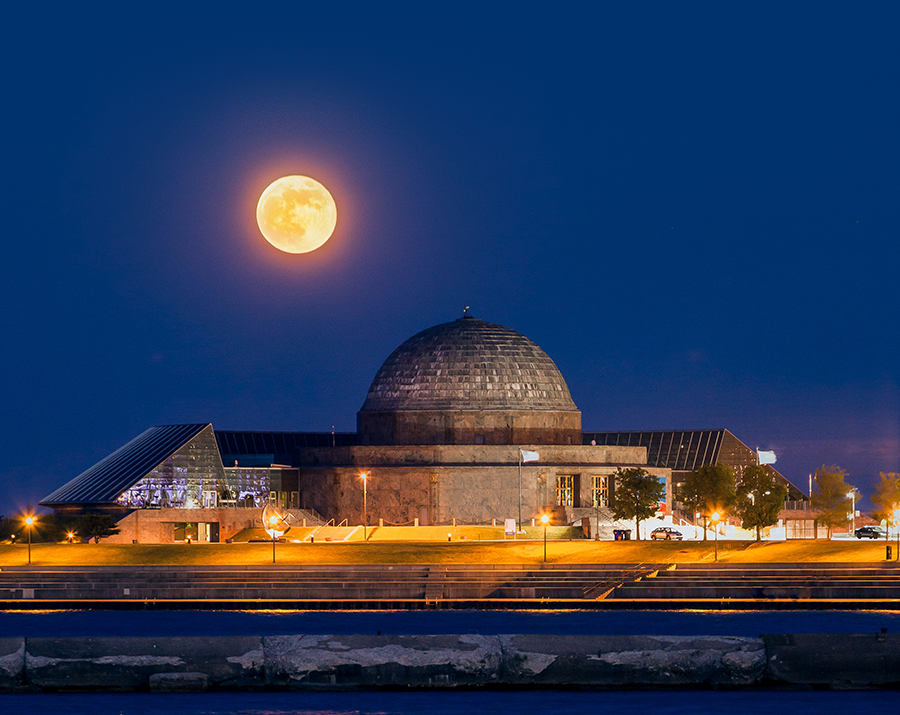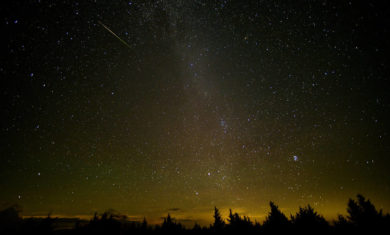Once in a Blue Moon

Cover Photo Credit: Chris Smith
For decades NASA’s plans for human space exploration have focused on Mars as the preeminent target. However, in December 2017, the Trump administration issued a national policy directive through its freshly reconstituted Space Council calling for a return to the Moon—not just with Apollo-style landings, but “for long-term exploration and utilization.” Over the next couple decades, NASA’s efforts may focus on the establishment of a lunar base in the style of Antarctic research centers or the International Space Station—continuously staffed but relying on supplies from Earth.But there are those who look to the Moon as a place where humanity will found an independent, self-sufficient existence.
The rationale goes beyond George Mallory’s famous quip about his reason for climbing Mount Everest:“Because it’s there.” Instead of being a goal in and of itself, lunar exploration is seen as a path to the extraction of valuable and even unique resources. Perhaps chief among these is helium-3, a light, non-radioactive isotope of helium that is implanted into the lunar surface via the solar wind and could be readily mined from the lunar soil (or regolith). Helium-3 is a potential source of clean nuclear fusion energy once such reactor technology is developed.
Water is another resource that is plentiful on the Moon—surprisingly so, given the stark, airless environment, which is subject nearly everywhere to enormous temperature extremes. In addition to ice deposits found in permanently shadowed (and thus extremely cold) polar craters, vast stretches of the lunar surface have been found to contain tiny concentrations of water outgassed from the Moon’s interior or generated in interactions with the solar wind. Water could be conventionally mined from the poles or simply baked out of the lunar regolith by roving, robotic ovens. As a resource, water is incredibly useful for several reasons: as liquid for human consumption, broken into its constituent elements for oxygen for breathing, and for the combination of hydrogen and oxygen as rocket fuel.
Even more ambitious visionaries see a future in which human existence on the Moon is not limited to isolated, enclosed habitats, but one in which the whole environment of the Moon has been altered or “terraformed” into a small version of Earth. The generation of an oxygen atmosphere thick enough to support life could be accomplished by impacting hundreds of comets the size of Halley’s Comet onto the Moon—a task impossible with current technology, but perfectly feasible given straightforward physics. Although the Moon’s low gravity means that oxygen atoms would escape into space far more readily than from Earth and any atmosphere would only be temporary, the timescale for such loss could still extend into millions of years. This is short on geological scales, explaining the Moon’s current airless state, but long in personal human terms.
Indeed, there is evidence that the Moon may have possessed a short- lived atmosphere billions of years ago. Several rocks recovered from the Moon by Apollo 16 astronauts were found to contain bits of natural iron that had somehow rusted—a process requiring the presence of oxygen and liquid water. Models of cometary impacts and volcanic activity suggest that temporary lunar atmospheres may have been formed many times over the past four billion years.
Whatever the scope of future human activity on the Moon, it is likely that someday we will return, and it may just be that this time it will be forever.







